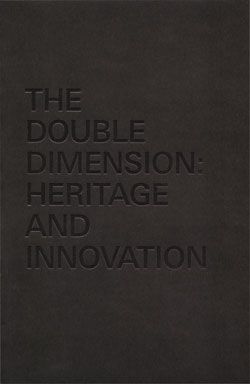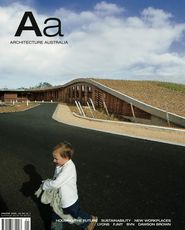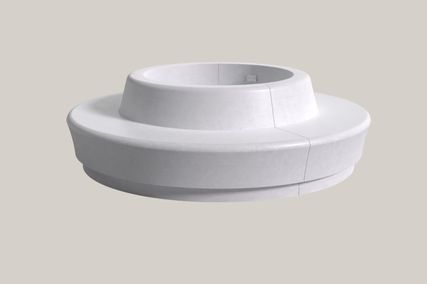Architects often find themselves in conflict with heritage legislation, but what are the possibilities for more productive exchanges? Anne-Marie Treweeke and Kai Chen review the RAIA’s TAKE 3.

The Double Dimension, edited by Jennifer Hill as the outcome of last year’s Sisalation Prize, presents a range of issues around the topic of heritage and innovation in case-study format. Written by design professionals, planners and academics, the essays explore the challenges of achieving design excellence while grappling with heritage constraints and controls, which many of the writers imply stymie or actively oppose innovative and interesting design solutions. It is suggested that good contemporary design is hard won in areas where the dead hand of heritage controls are in play, whether specific to the site or a more general overlay pertaining to an urban character. Local council planners and state authorities get their share of blame and criticism. But are they the only problem?
Protection and conservation of our cultural heritage is universally supported by the community as a necessary action. Bearing in mind the diversity of things that can be classified as cultural heritage, and understanding that one person’s heritage is not another’s, protection measures are necessary. There are well-established and globally recognized processes and criteria for establishing significance, and the imposition of heritage controls should be a transparent, objective and scientific process.
It follows that the process of interacting with a site or place with recognized heritage significance should enable non-arbitrary responses that are focused on the essential aim of retaining the significance as established. When this is the case, and when the debate over the proposed development of a site focuses on the essence of the retention of significance and not on the appropriateness of the design response - contemporary or otherwise - the system is working. Of course, this is not always the case and there is certainly a widely felt sense that heritage is becoming more prejudicial in its application.
Grappling with any planning controls, including those specifically dealing with heritage, adds a layer of complexity and challenge to a project. However, they should never be seen as compromising or diminishing the possibilities for a design. There are enough examples in this book where perseverance by both the architect and client, in tandem with or in opposition to the authorities, has achieved an outcome that far exceeds expectations. Sadly, there are also examples where bureaucracy and a prejudicial application of planning and heritage controls have resulted in poor outcomes.
In our own experience of a recent tender, the selection criteria established by the client required us to reflect on our philosophical position on heritage and authenticity and how this would relate to the project outcome. In the context of this particular project it was a very relevant question that demonstrated the client’s understanding of the complexities of current heritage debate and particularly the potential pitfalls of a permit process that would embrace both local and state government authorities. It also had the effect of placing the heritage question front and centre in the minds of all participants in the process, rather than it being an annoying permit-related issue that had to be dealt with as a secondary consideration once the “vision” had been established.
A supportive client is perhaps the most critical element to any architectural project. The most strenuous and draining process of design, authority approval and construction can be survived simply by having that one single element. Trust and professional respect are necessary elements of this relationship, so that when the hard decisions need to be made the client is an informed and active participant in the process. It is far easier to challenge the system (if necessary) when the project team is clearly speaking with one voice, as demonstrated by Jennifer Hill and Lindsay Clare in their essays in this volume.
In his essay on “infill” architecture, Alex Tzannes argues that this is the “most common form of architectural practice throughout the world”.We would go further and say that it is architectural practice. The measure of any design, whether sited in an urban or rural context, is how well it synthesizes context, programme, materials and aesthetics into a built form. Designing within or adjacent to a heritage site is no more than this, but it does demand of the architect a greater level of understanding of the original. Indeed, one of the great pleasures of working in the field of heritage architecture is the opportunity to engage with the work of architects from the past.We describe the process of understanding the original intent and finding appropriate ways to let the new and the old interweave and interact as “making conversations” with these architects. In The Double Dimension, Philip Goad reflects on the lost opportunity for a fuller conversation between the old and the new afforded by the refurbishment works to the NGV in Melbourne.Wessel de Jonge’s piece, focusing on the conservation of landmark Modern buildings, including Reitveld’s Biennale Pavilion, reminds us that the conversation can go as far as how to resolve original details that have been found over time not to work, while maintaining the design spirit and intent. This is the hidden and non-heroic side of the conversation, but it is fascinating nonetheless.
Architecture should be about space, not style. Unfortunately the debate about what is an appropriate response when bringing together heritage and contemporary work is more and more about style and aesthetics and not a discussion of appropriate spatial and programmatic propositions. The latter are not easy things to address compared to a discussion about style as they require more than a superficial subjective response.
Howard Tanner’s review of the Woollahra houses by Glenn Murcutt demonstrates that contemporary design that appreciates the subtleties of scale and urban character can be as sympathetic and appropriate to maintaining heritage significance, if not more so, than bland by-the-numbers reproductions. The possibility for subtlety in architectural practice is, we suspect, not a normal architect’s modus operandi, especially if you are filled with the ambition to make a mark. New design in a heritage context does not have to be recessive and banal or challenging and heroic, but it does need to be architecture.
The debate begun by the editors of this edition of TAKE 3 is a topic that deserves our attention and a forum for further exploration of the issues.
Anne-Marie Treweeke and Kai Chen are architects at Allom Lovell and Associates















